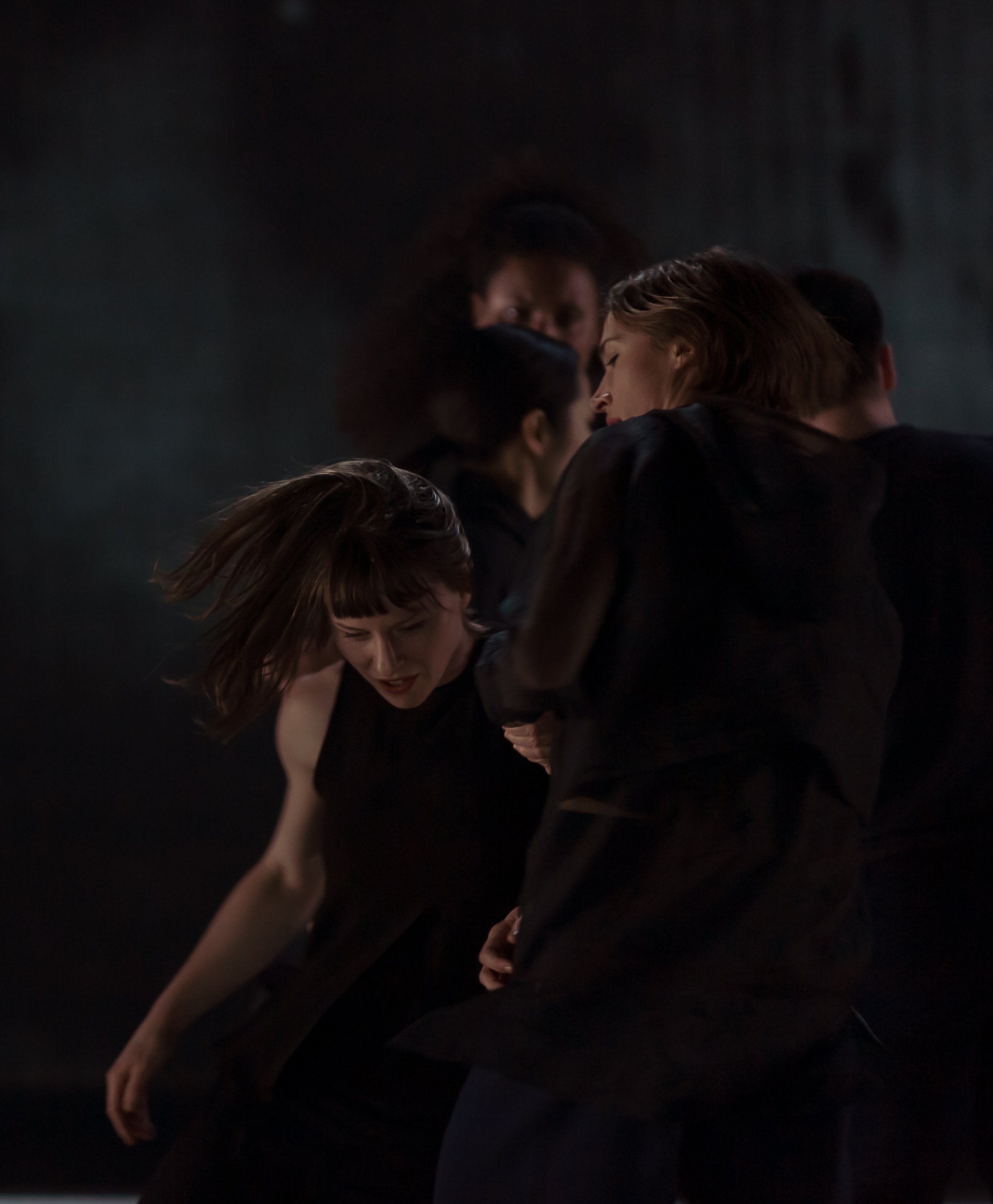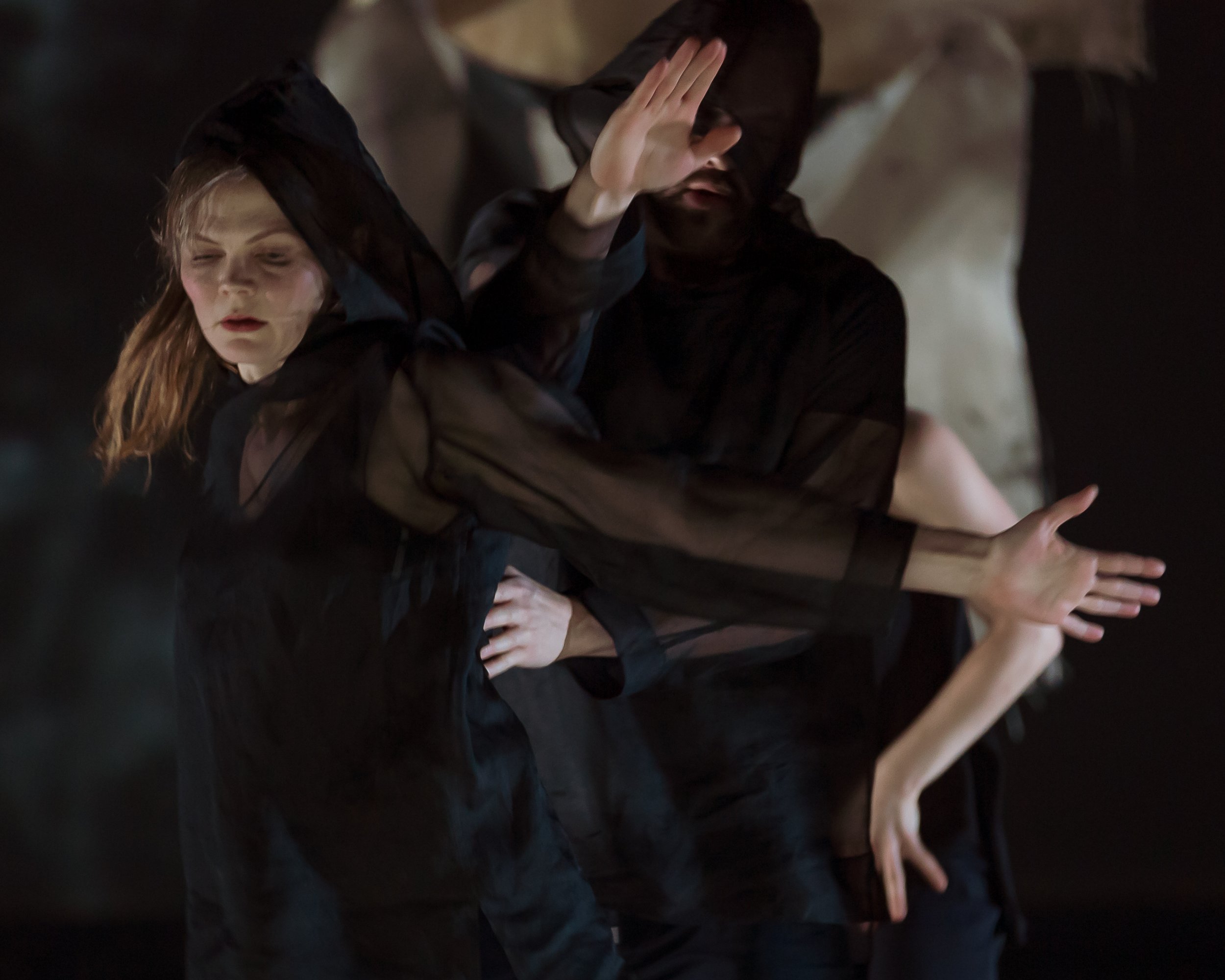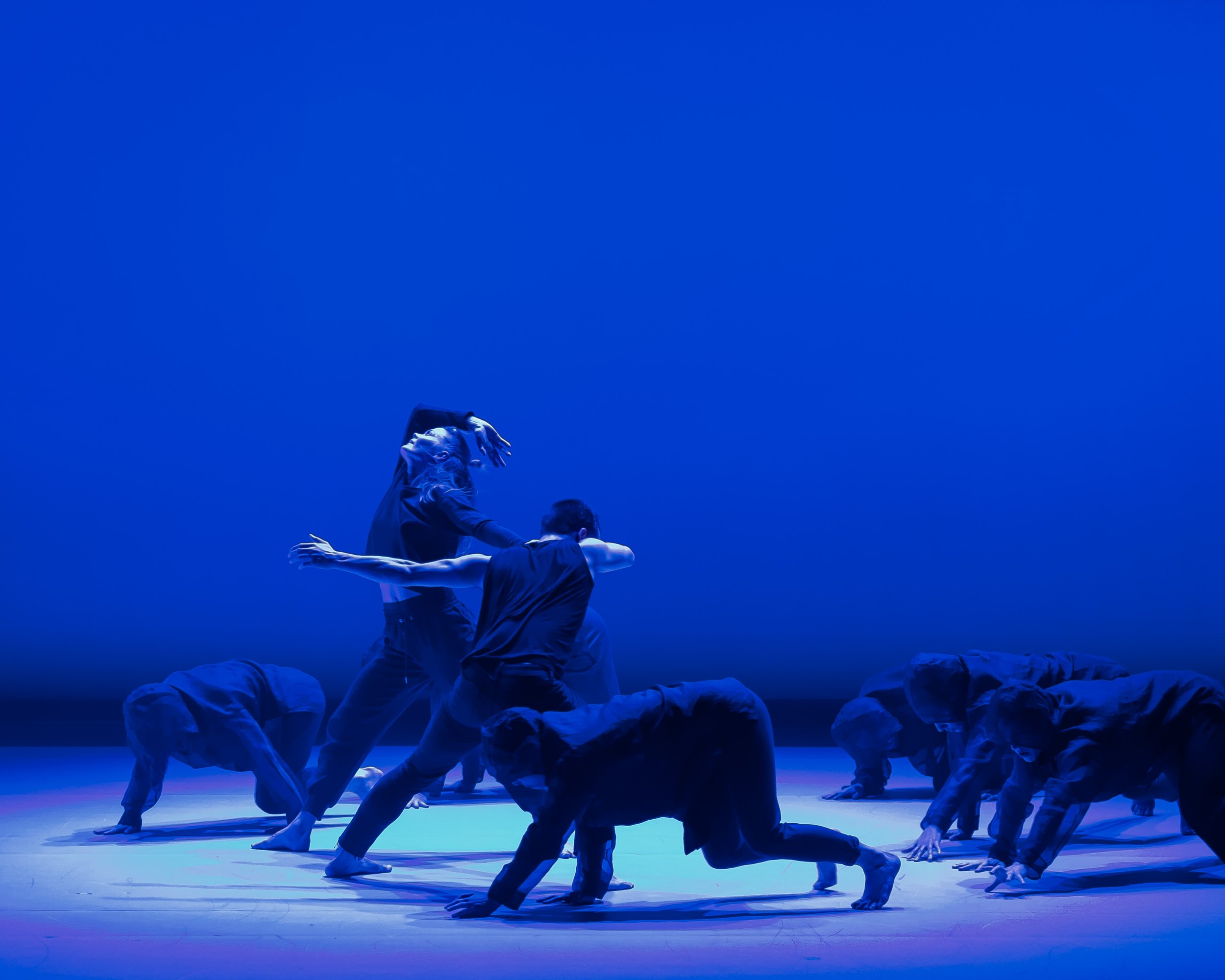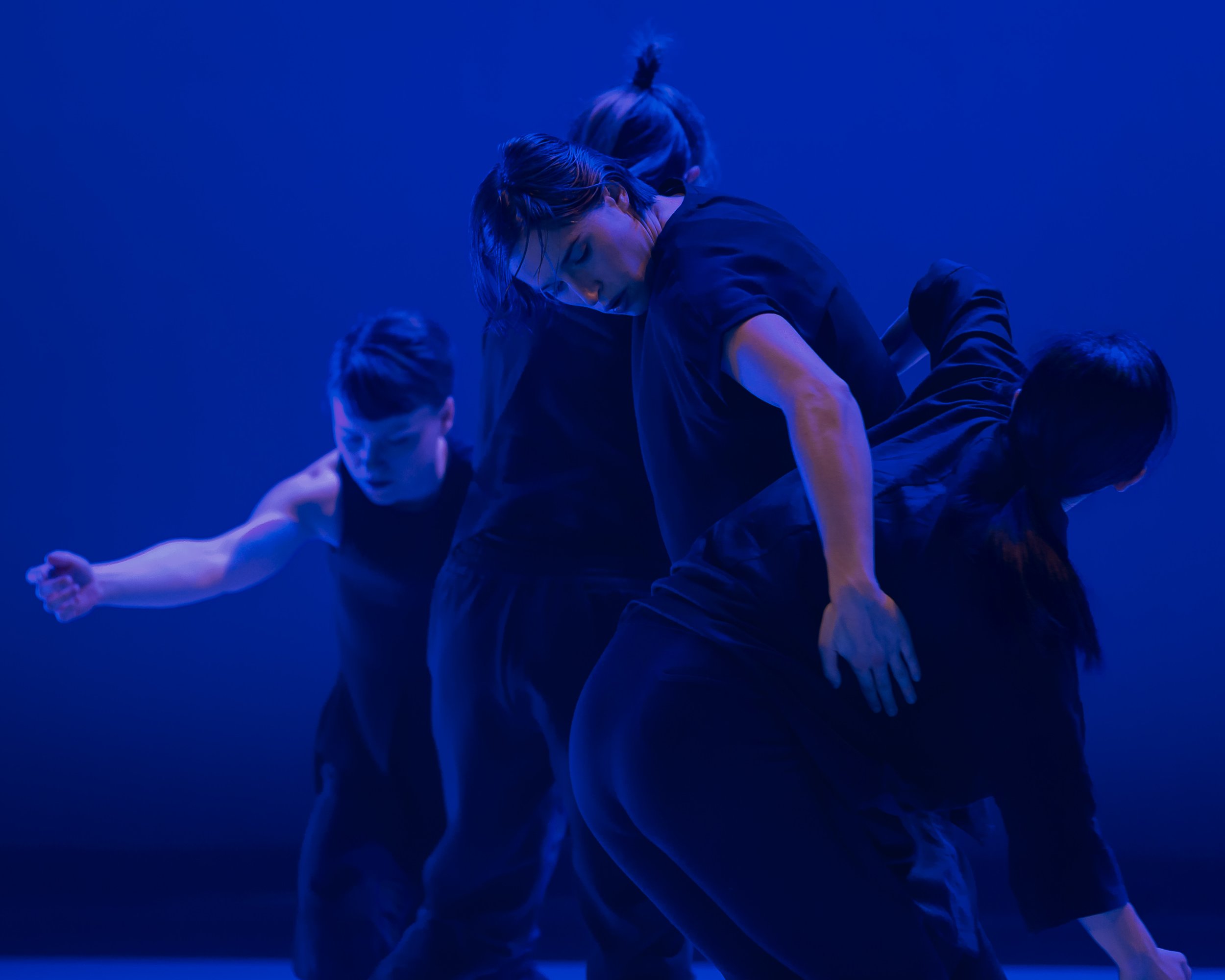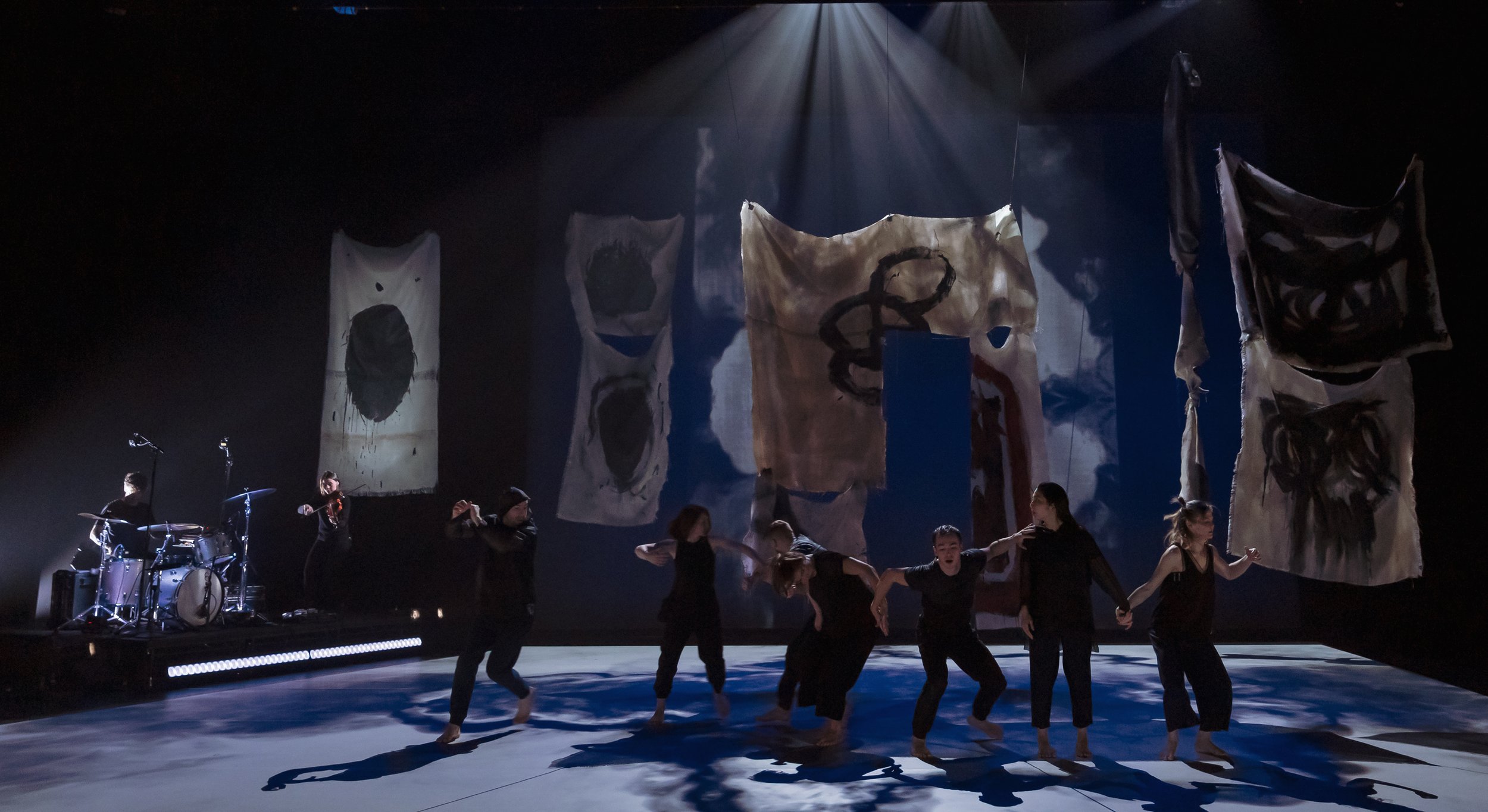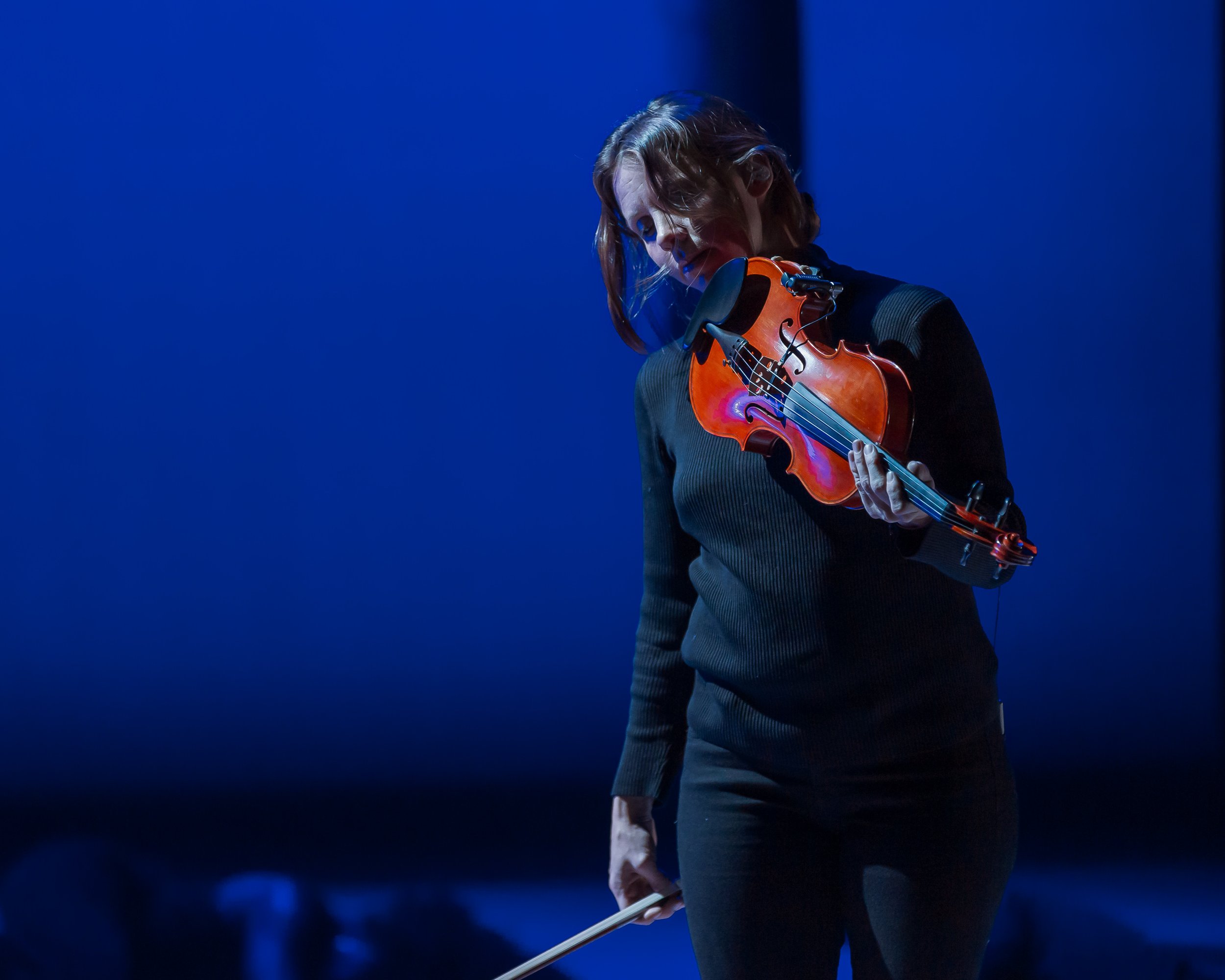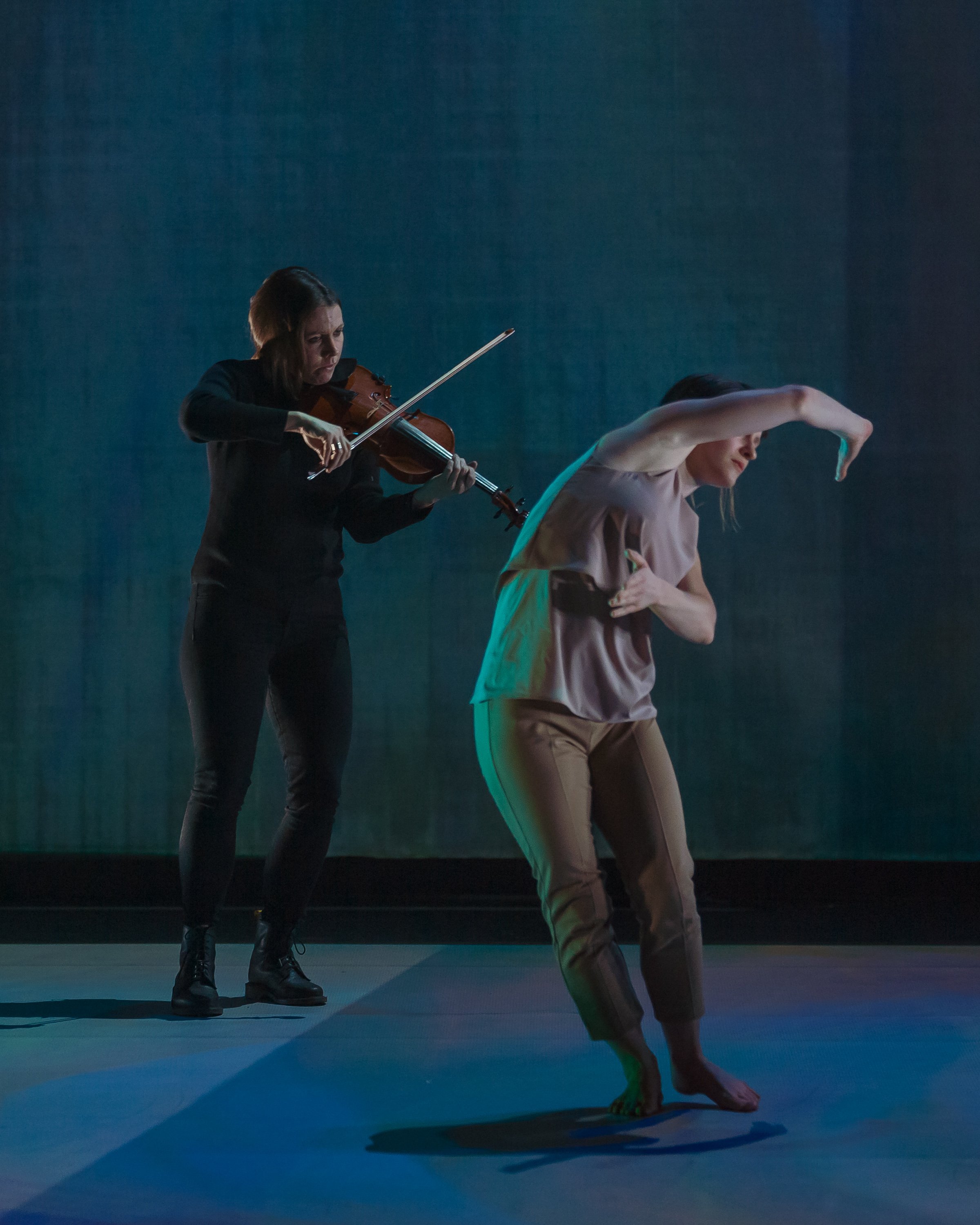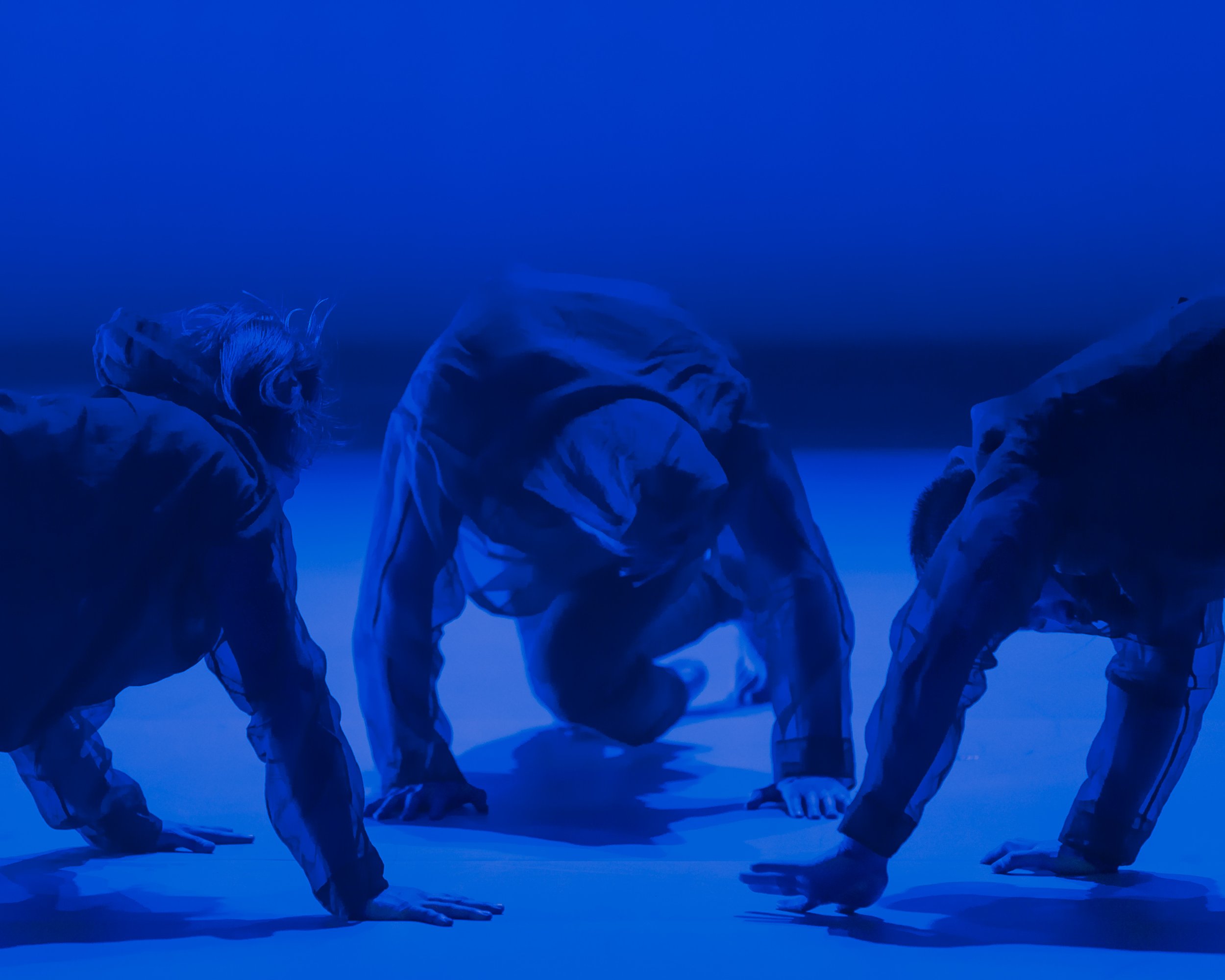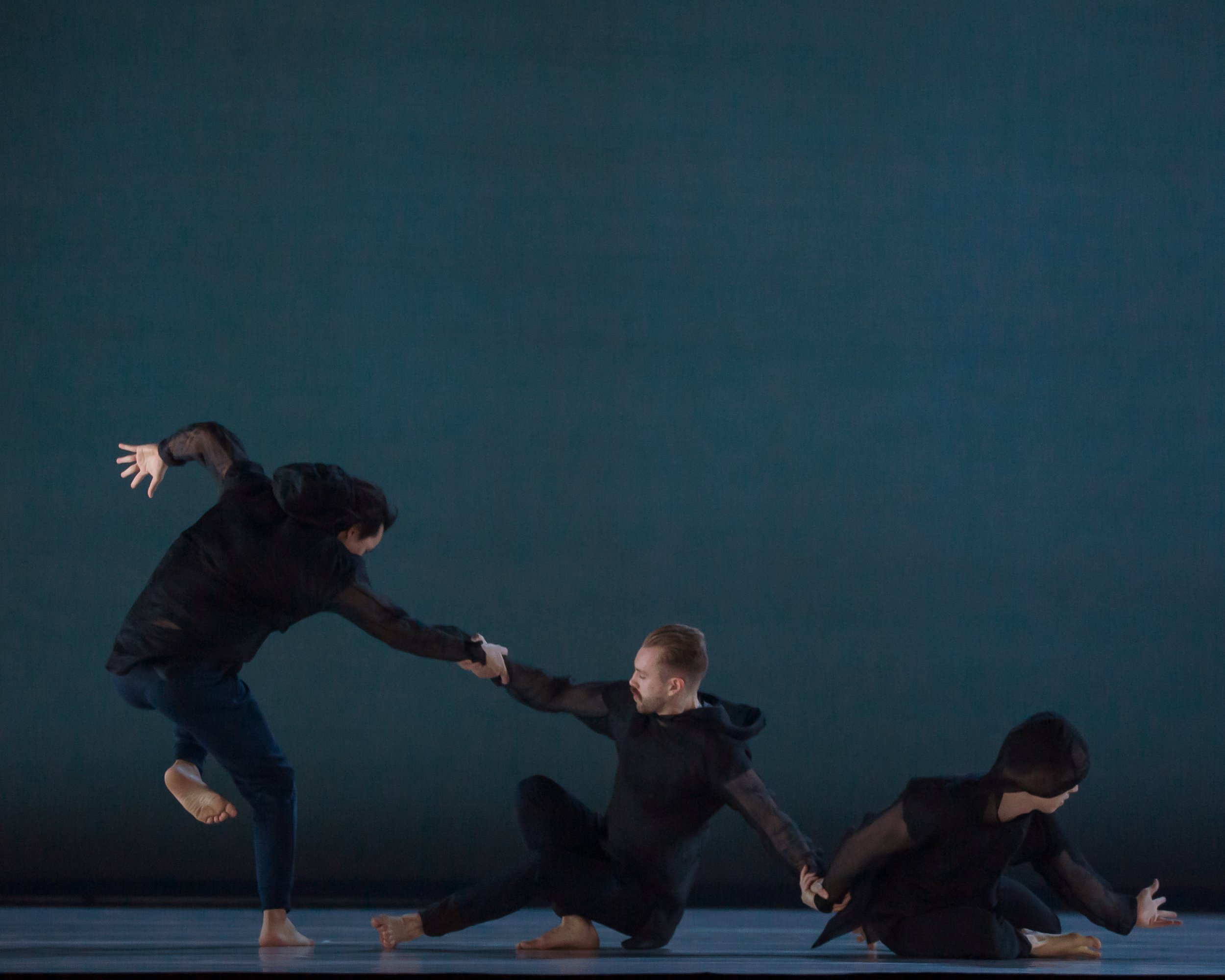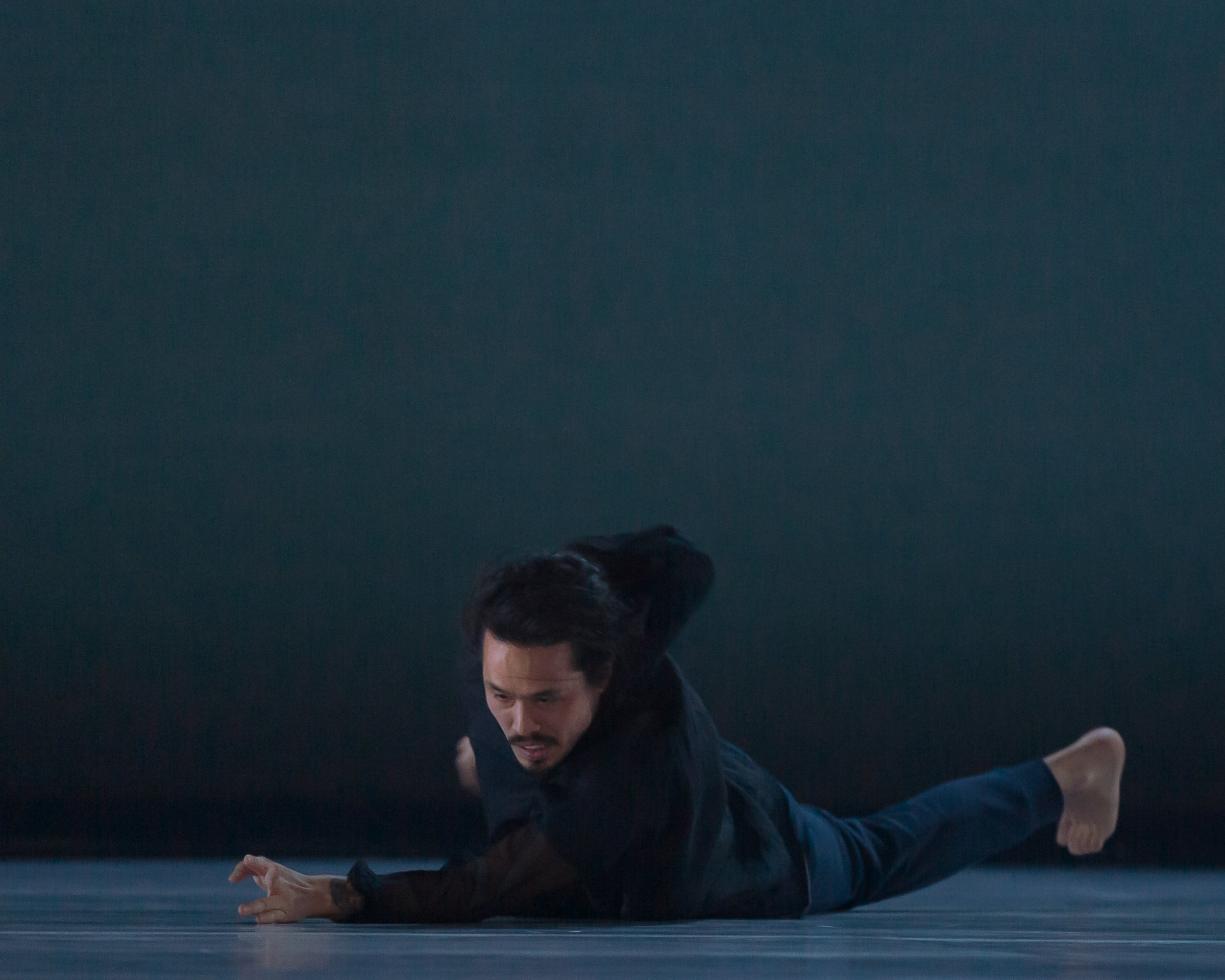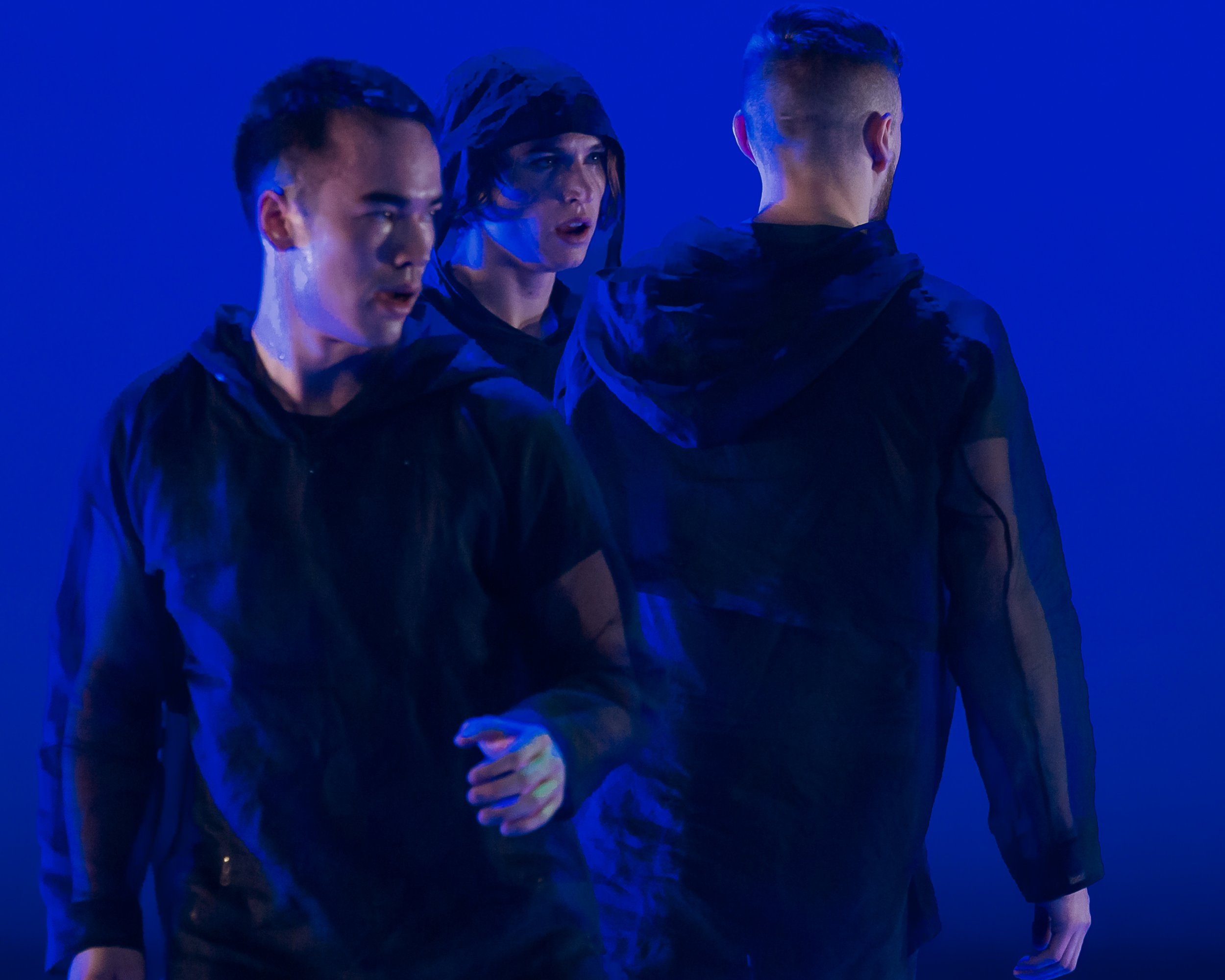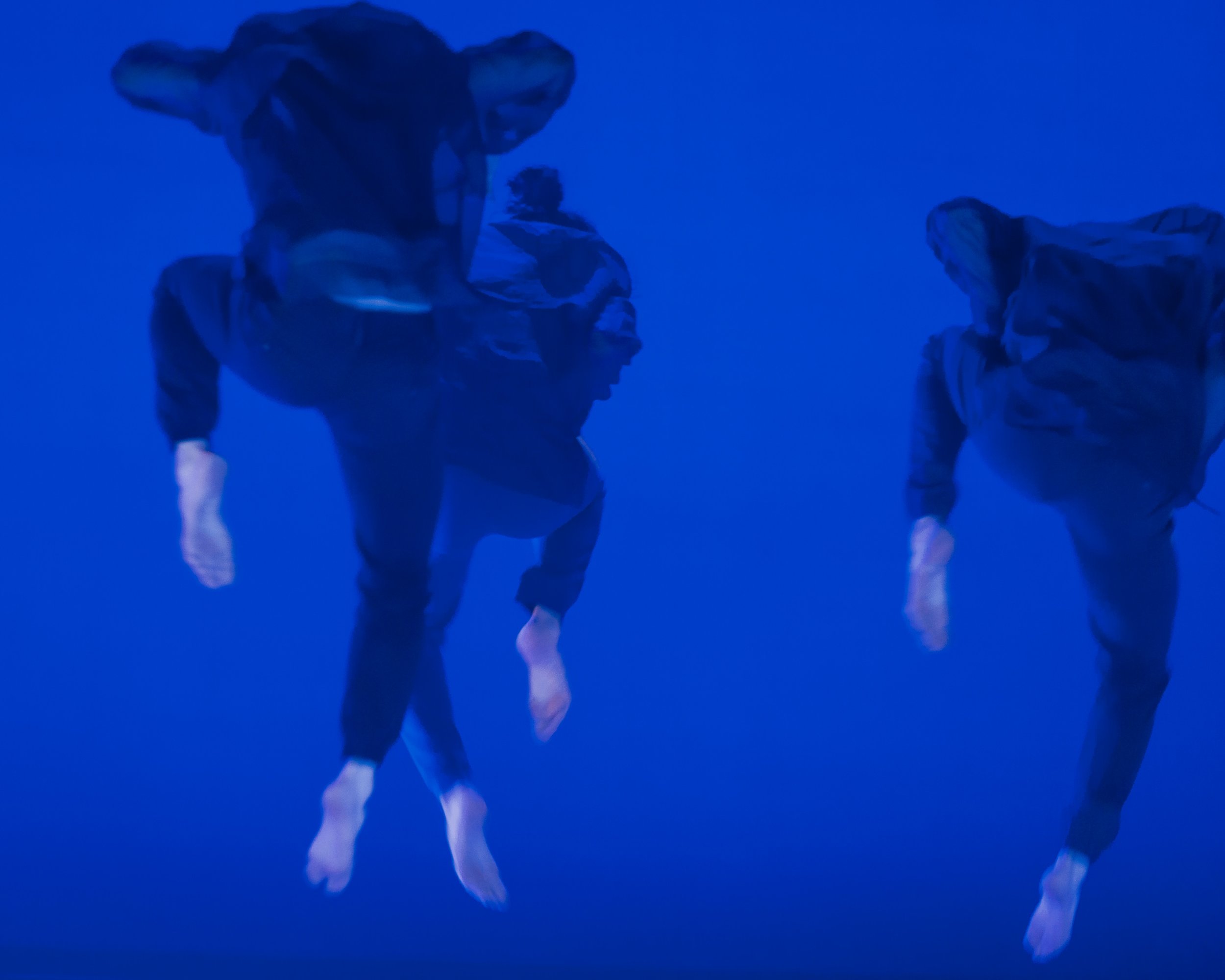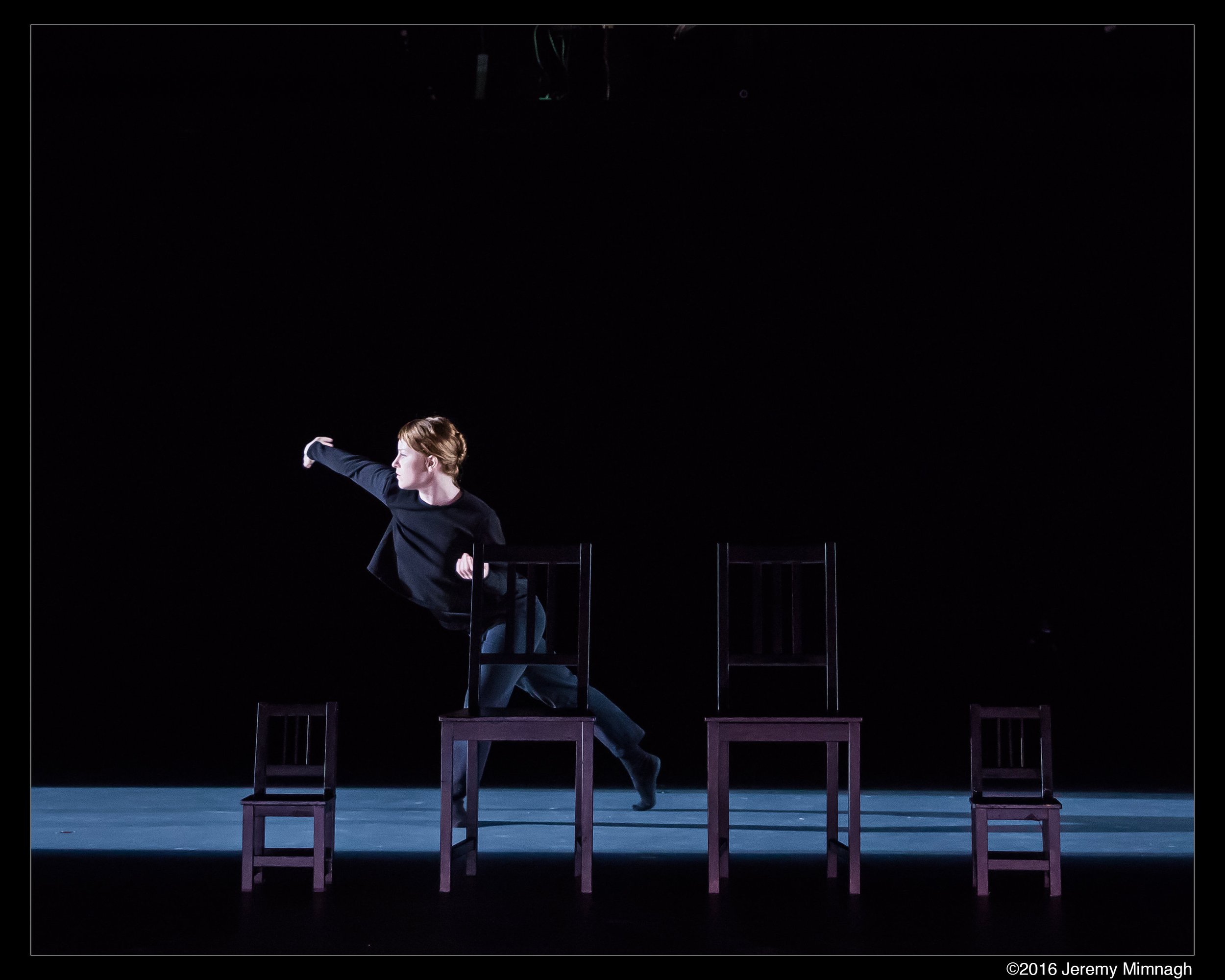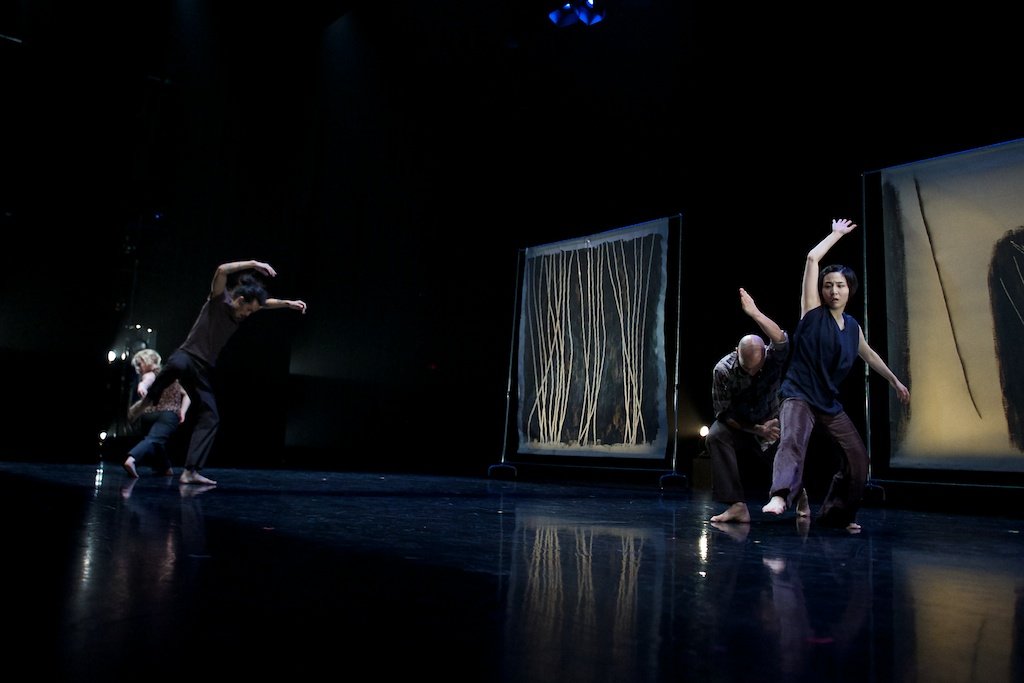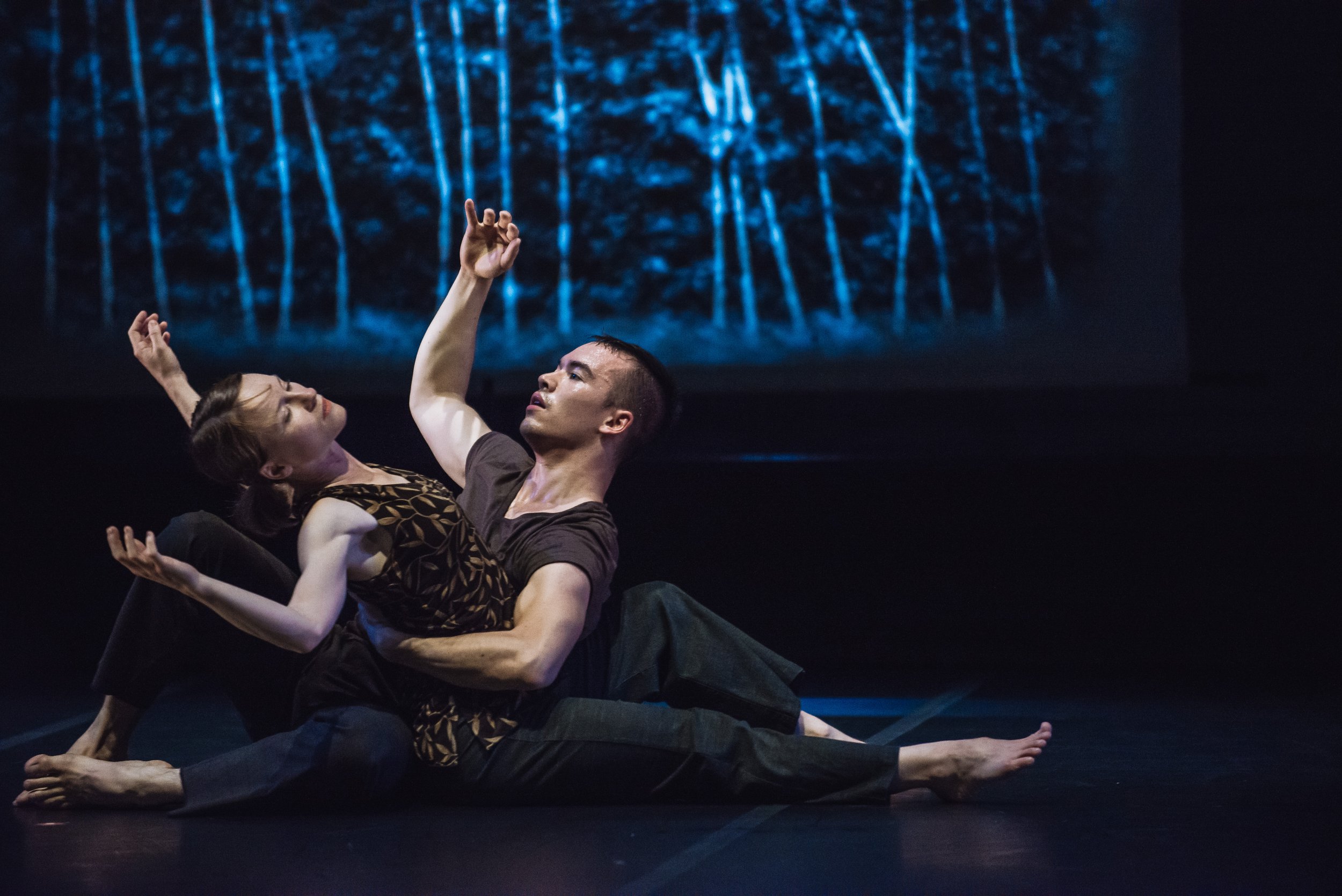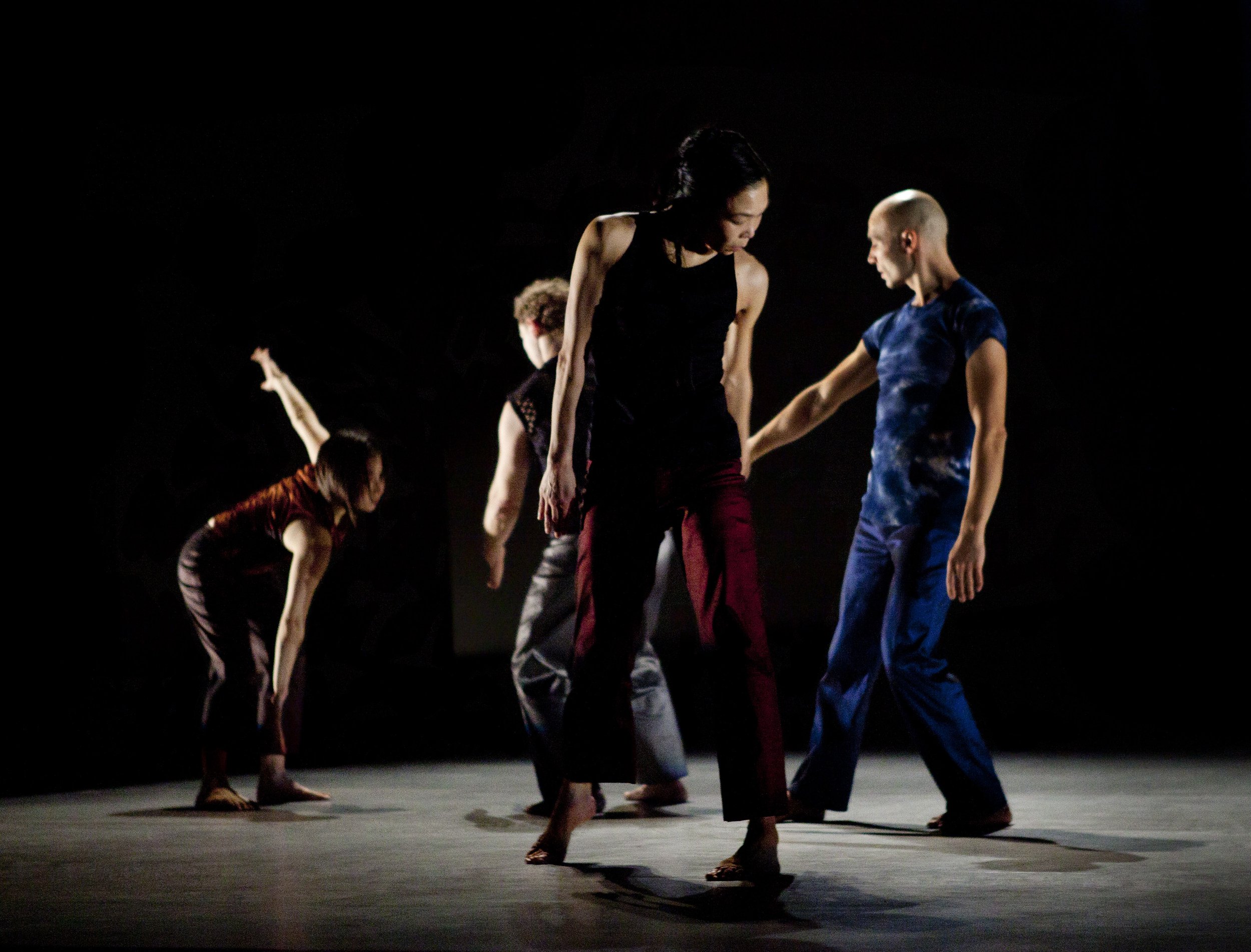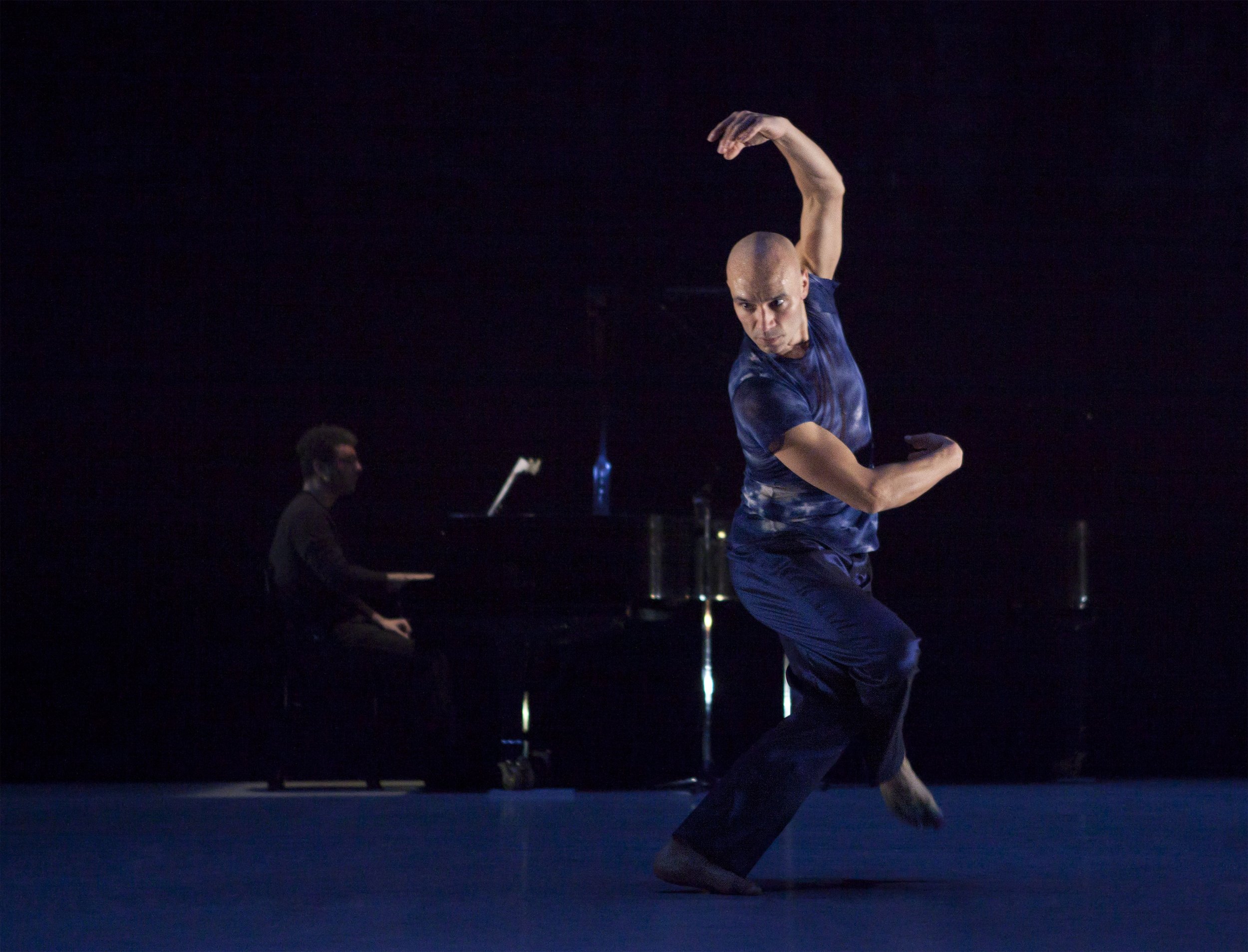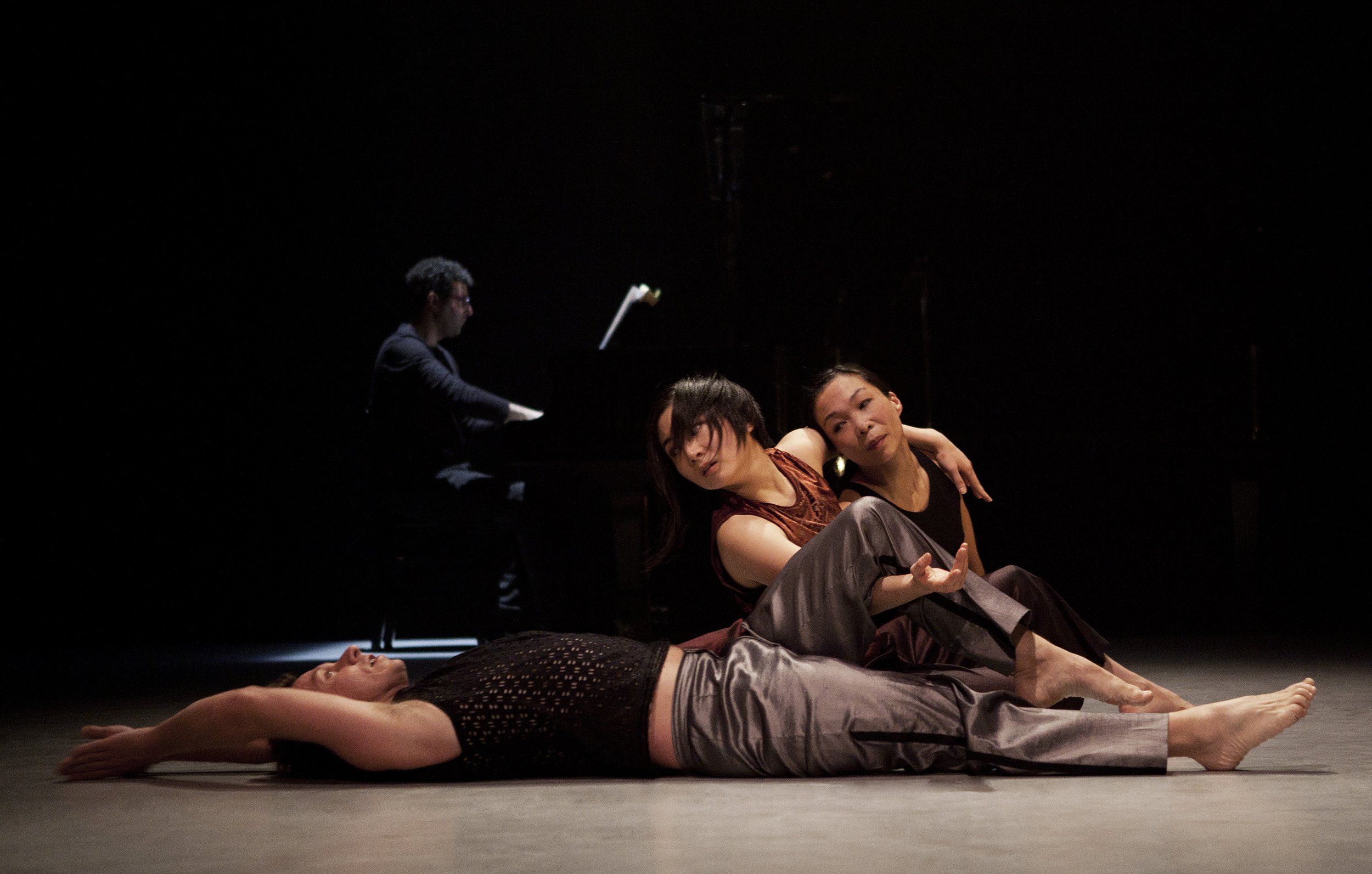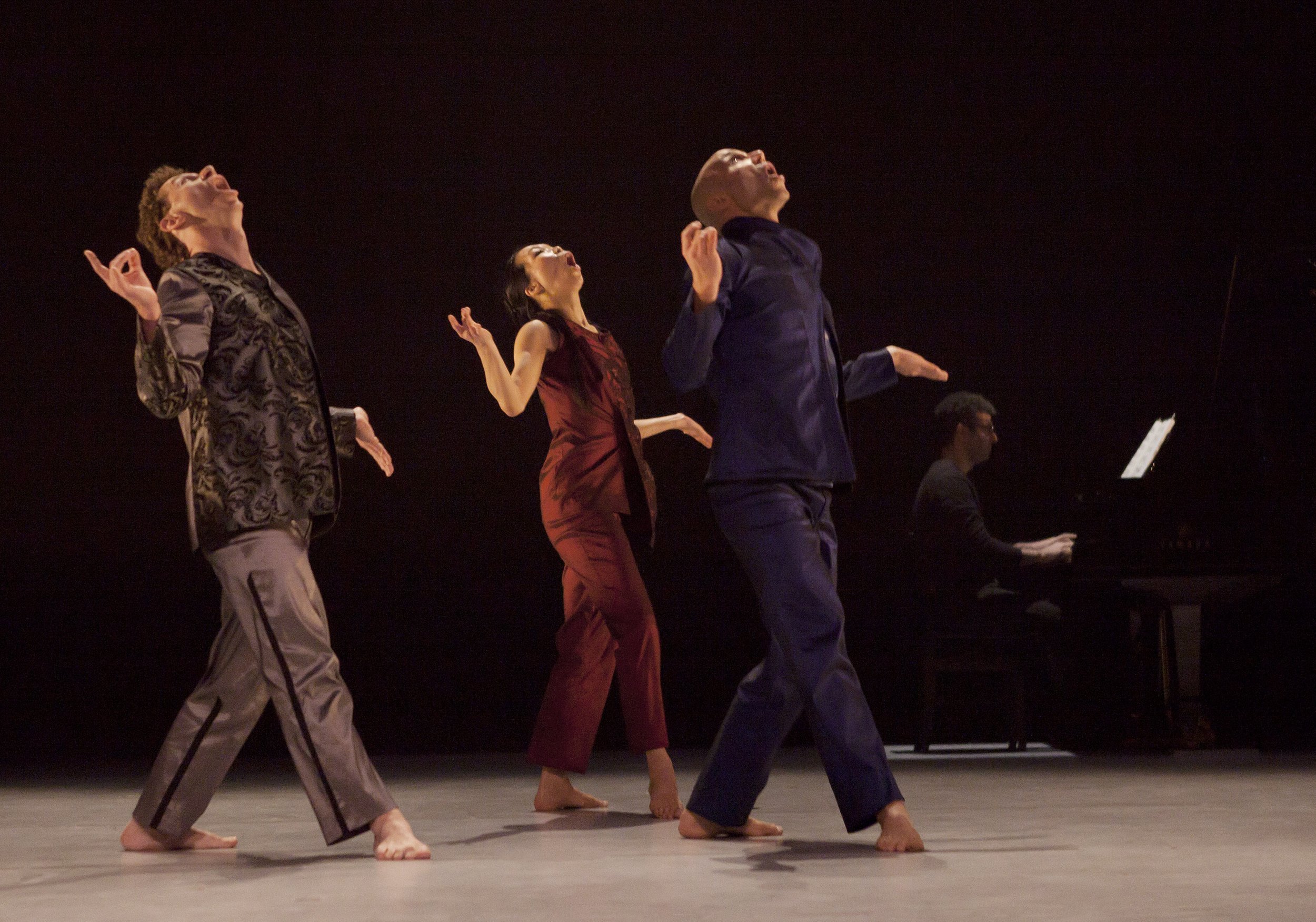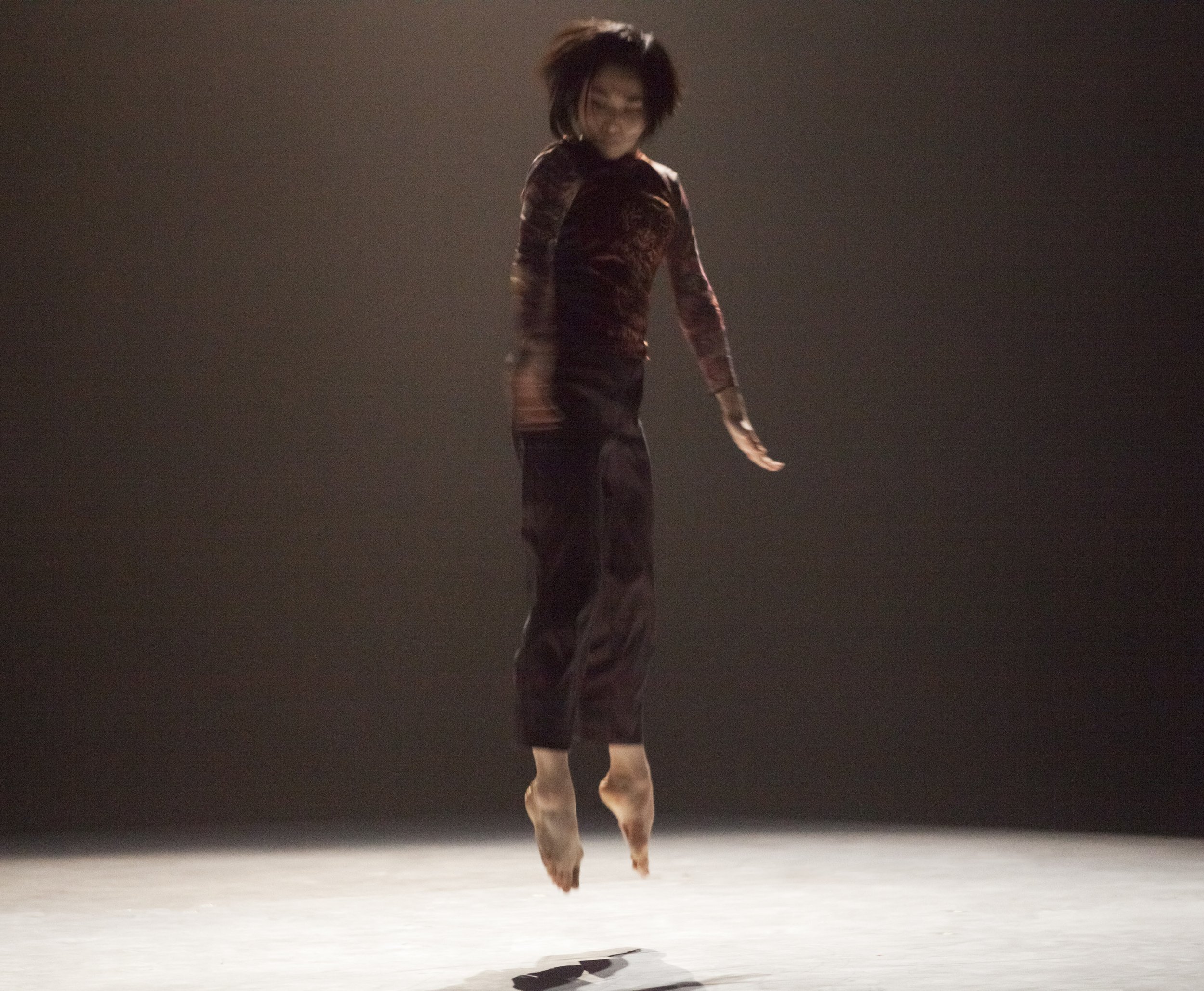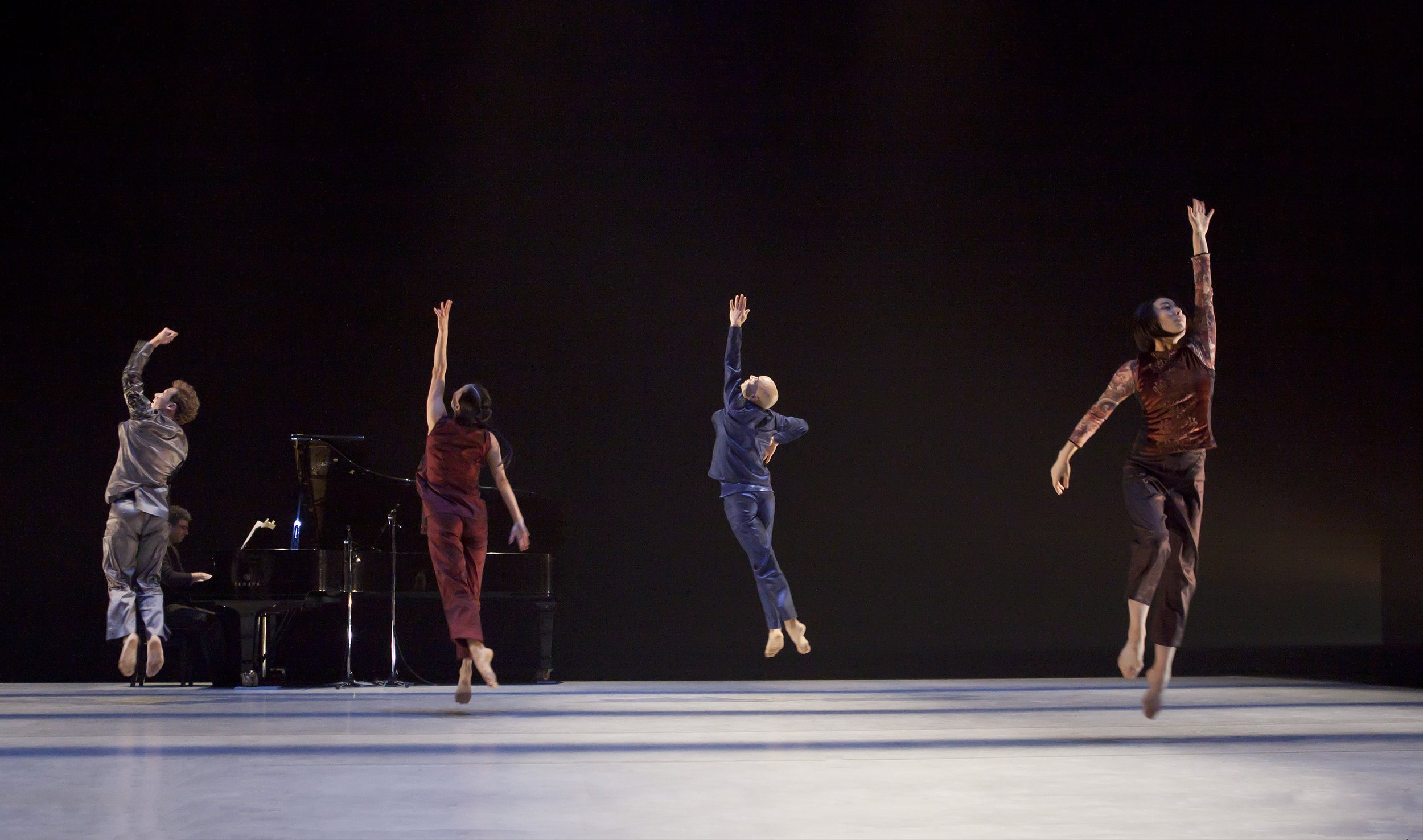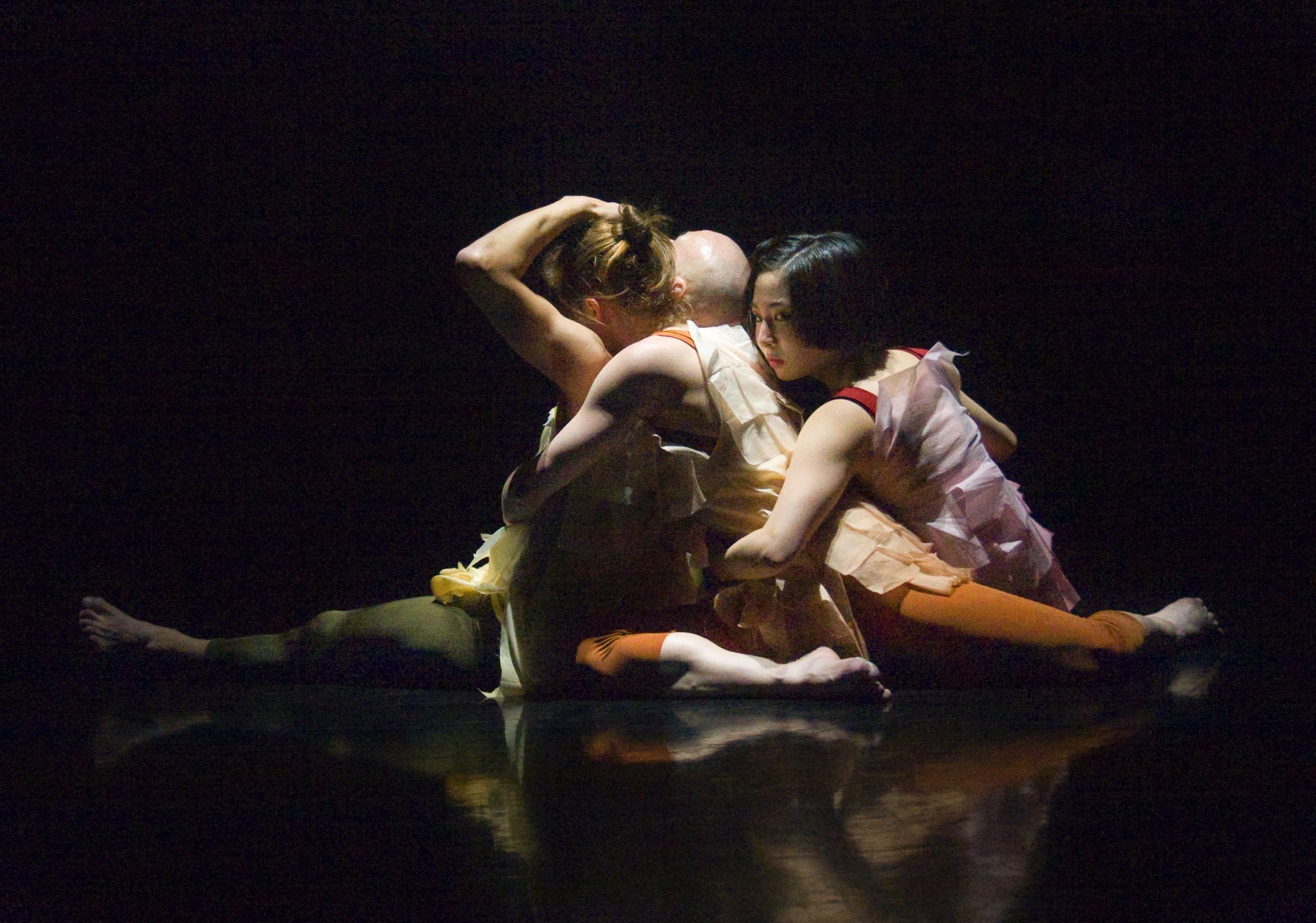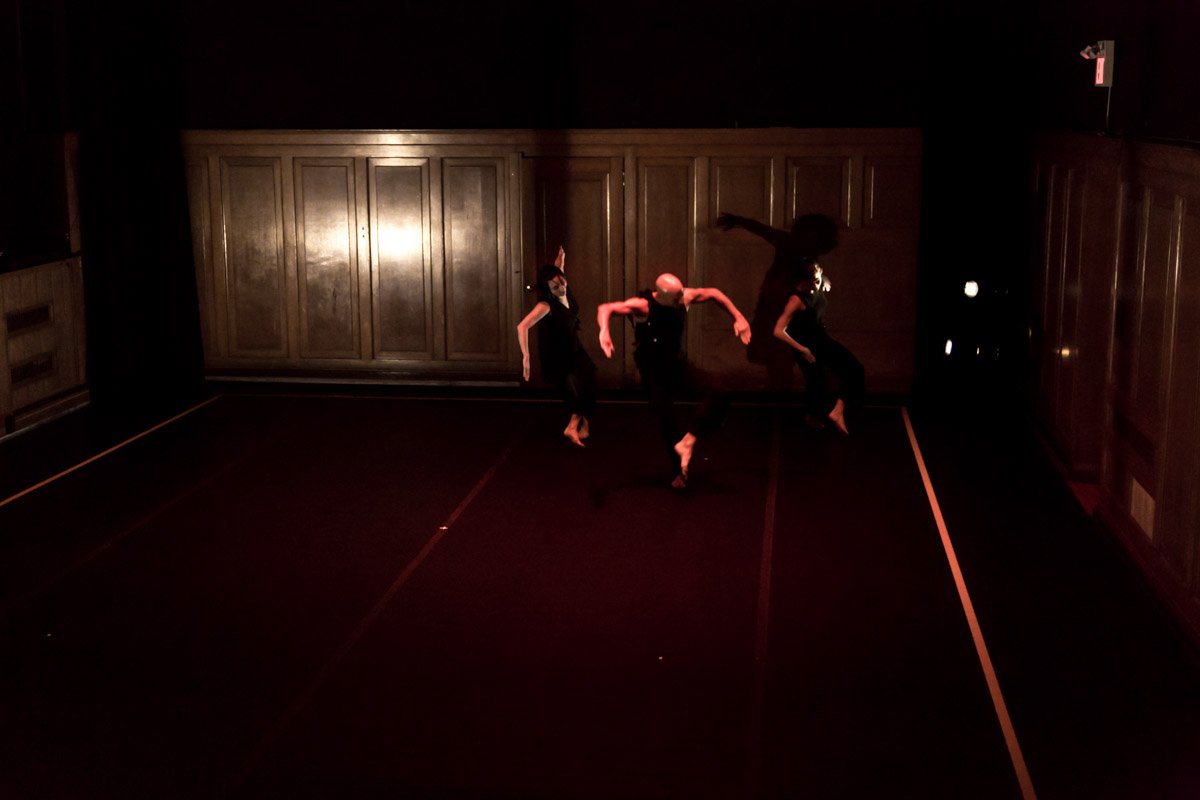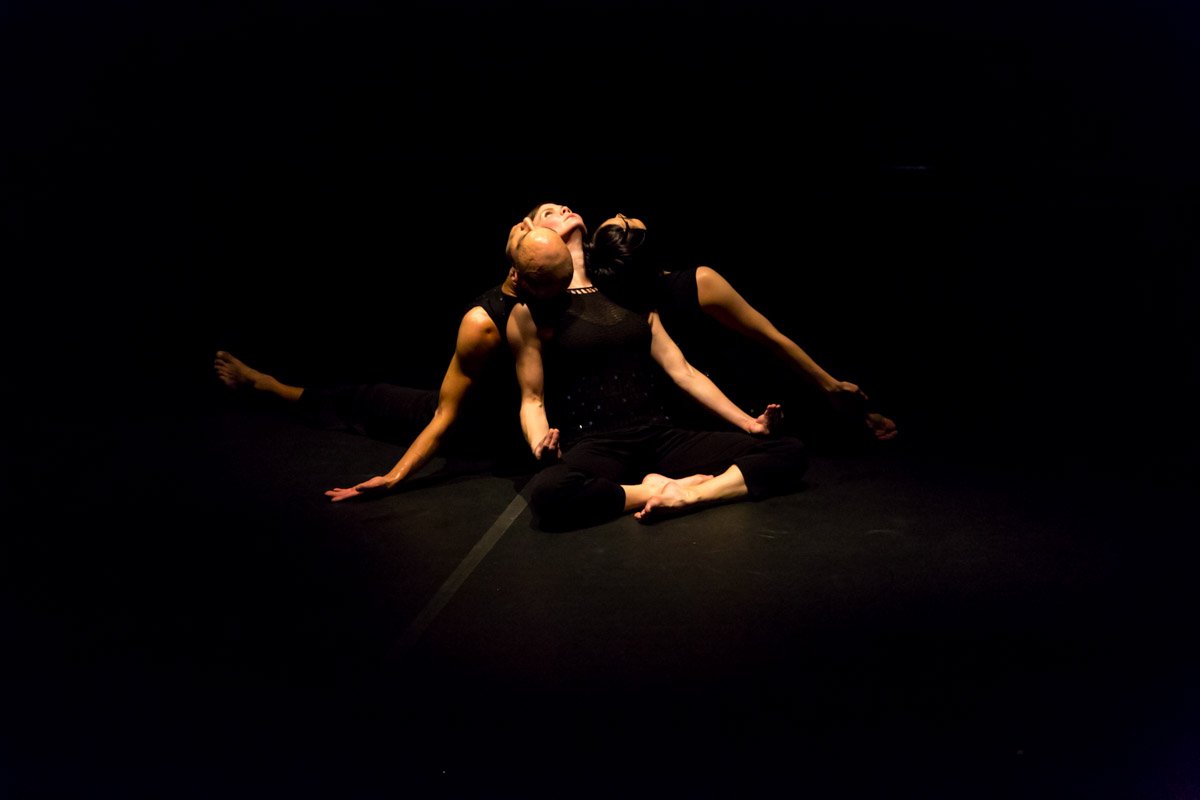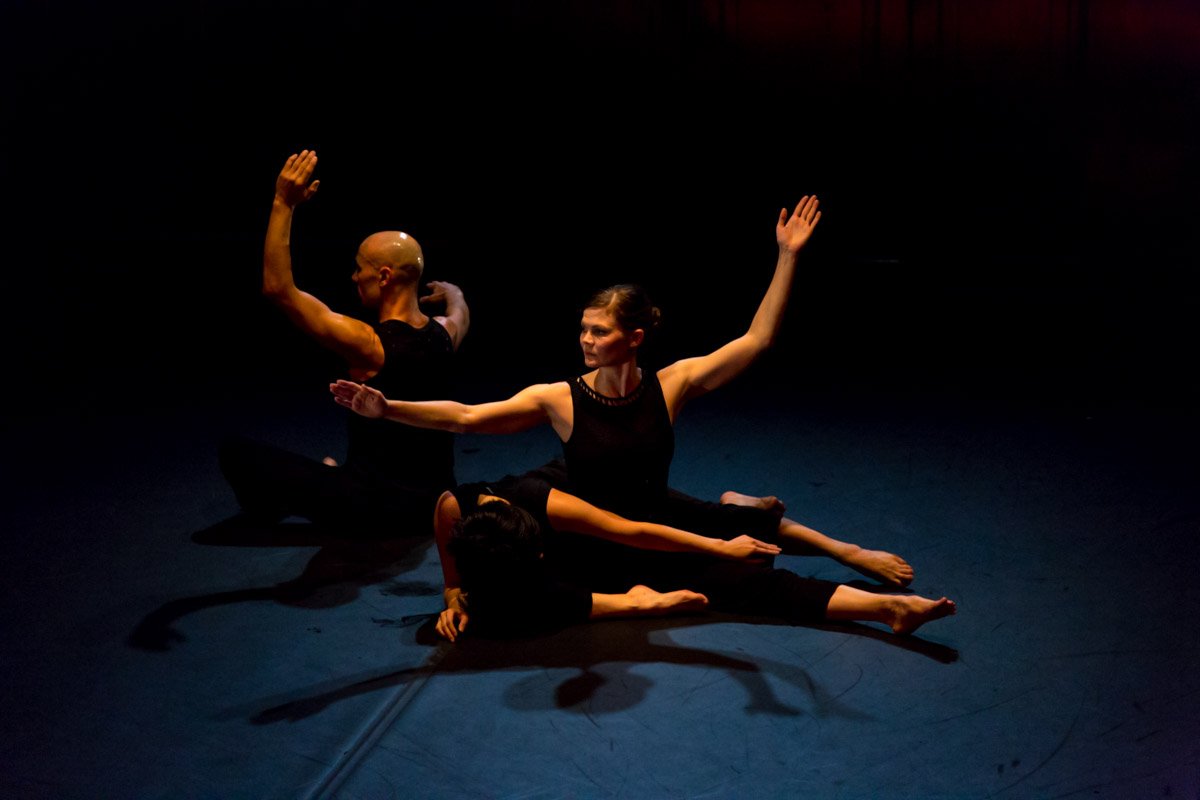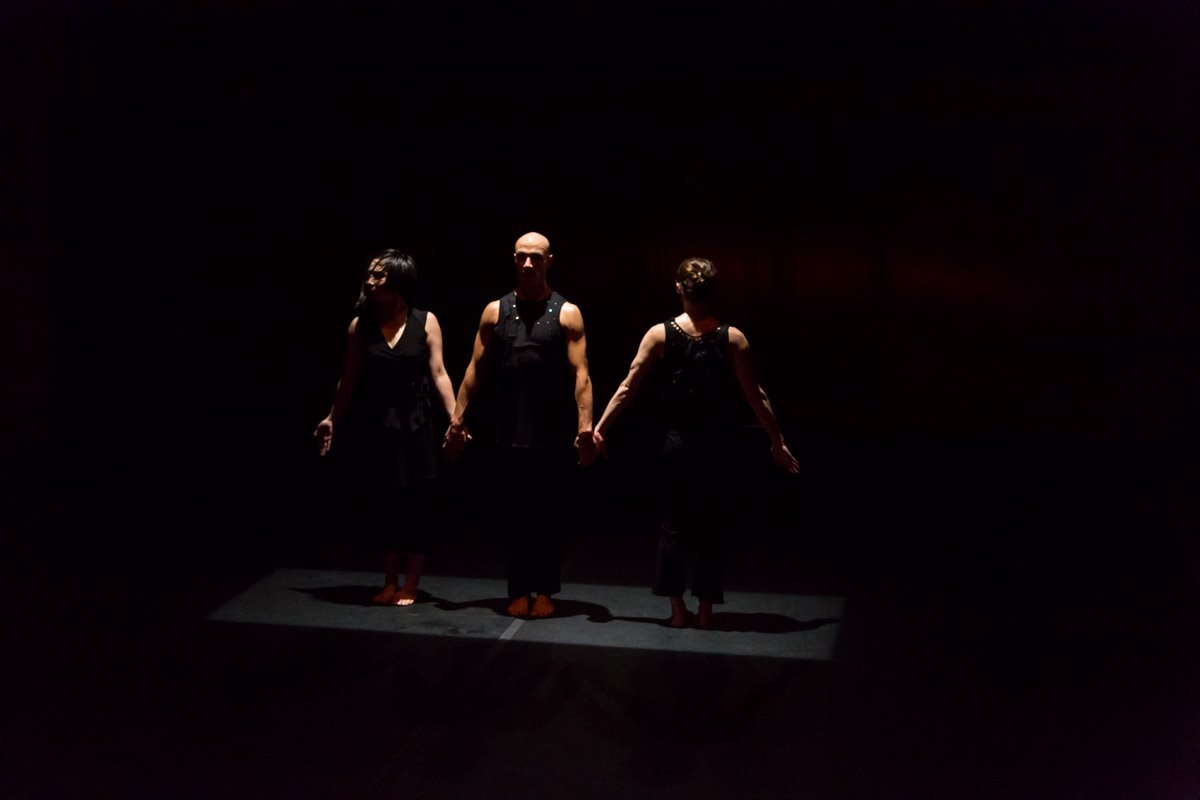who we are in the dark (2019)
/We have arrived at another landmark production for Peggy’s company - a large-scale work with a cast of 7 contemporary dancers and 2 rock-star musicians performing live, which toured across Canada and internationally. Peggy writes:
The impetus for who we are in the dark was the urgency of seizing the moment with a new musical collaborator in the wake of a dazzling but brief first project. A 2015 commission from Fall for Dance North threw me together with the sensational indie-rock violinist Sarah Neufeld for a duet we titled fractured black. Sarah’s lyrics for the duet opened with the line, “who we are in the dark” and, with a ferocious appetite to carry on creating together, we zeroed in on that opening line, embracing darkness as the subject for a hugely ambitious project.
Our universe emerged out of darkness. Each of us emerged from the darkness of our mother’s womb, and darkness will swallow us when we die. We live with darkness as we live with light: the alluring darkness of night, intimacy, sexuality, the unconscious; the creeping darkness of uncertainty, malice, suspicion; the confounding darkness of bafflement, mystery, secrets, the unknown and the unknowable; the dreadful darkness of treachery, violence, cruelty, suffering, and grief; the comforting darkness of solace, condolence, and contemplation.
Rather than building the choreography in relation to music, I worked from text as a foundational source for movement invention. The words of Rainer Maria Rilke, Sylvia Plath, Jeanette Winterson, Jean Genet, Pablo Neruda, Mary Oliver, Henri Michaux, as well as my friend, Toronto poet and translator, Roger Greenwald, and even the horror writer Dean Koontz, are deeply seeded in the choreography. The dancers were crucial, primary collaborators in the creation of movement language. An intense period of initial movement exploration was undertaken with Kate Holden, Sarah Fregeau and David Norsworthy, and their artistry permeates the choreography. Every dancer in the studio during creation has also left their imprint: Sahara Morimoto, Mairi Greig, Jarrett Siddall, Benjamin Kamino, and Naishi Wang, as well as – very early on – Ric Brown and Corrado Cerruto.
A two-week residency at the Banff Centre for Arts and Creativity brought Sarah Neufeld into the studio with us, where she developed musical ideas in response to the choreography and where I choreographed to a wildly virtuosic violin solo she brought ready for a scene I hadn’t yet touched. Much of the score was composed in that glorious place during an intense period of undivided concentration that also included access to a theatre. This enabled our first experiments with projections by Jeremy Mimnagh and with the placement and movement of drops by visual artist John Heward, masterminded by lighting designer Marc Parent.
I’d known the work of John Heward since the 1980s. With black paint on un-stretched, repurposed rayon or canvas, torn and gouged with clamps, his works carry a physical history. John’s images had never been used as a part of a stage production before and I took the trust that he placed in me fully to heart. His ill health prevented him from being with us in Banff, and John’s death four months before the premiere marked the devastating loss of a great artist. Sharing the grief of his loss with his family, friends, and colleagues, we dedicated our work to his memory.
Fides Krucker created a remarkable vocal score for the dancers that wove their voices within the sonic design and elevated and amplified their embodiment in powerful and significant ways. Costume designer Robyn Macdonald designed a wardrobe in black, grey, and dark blue that included sheer, black hoodies – cut long and wide – that were worn in many of the scenes. Jeremy Mimnagh’s projections covered the full extent of the floor and the cyc and offered – among many visual pleasures – a startling technicolour finale in the closing scene. John Heward’s many drops slowly accumulated from one scene to the next before being violently torn down and thrown to the floor amid a cacophony of music and movement. Marc Parent – my primary collaborator since 1990 – worked closely with me on every single element of scenic design as well as devising tremendously evocative lighting that transformed the stage for each scene, focusing the visual richness of this work.
The intimate compositional collaboration between Sarah Neufeld and her Arcade Fire bandmate, drummer Jeremy Gara, was a constant source of intense inspiration for all of us, above all the dancers, who revelled in the music and their virtuosic musicianship.
Every planning meeting, design meeting, vocal warm-up, rehearsal, and costume fitting, every on-stage dance party called at the half hour by our tech team of Gabriel Cropley and James Kendal, honestly EVERY moment on this project was an occasion for the deep joy of collaborative creative work.
This was an epic project, and it COULD NEVER have been accomplished without the investment of the Canada Council; the Ontario Arts Council; the Toronto Arts Council; BMO Financial Group; the NAC’s New Creation Fund; the CanDance co-production partners Danse Danse (Pierre Des Marais and Caroline Ohrt), the National Arts Centre, (Cathy Levy), The Banff Centre for Arts and Creativity, Fall for Dance North (Ilter Ibrahimof) and Canadian Stage (Matthew Jocelyn). And furthermore, this project COULD NEVER have been accomplished without my company’s manager Meredith Potter, whose vision, skill and care guided this endeavour. I am filled with gratitude to the splendid artists who went on this adventure with me.
premiere: February 21, 2019, Bluma Appel Theatre, Toronto
for Canadian Stage & Fall for Dance North
subsequent performances: Danse Danse / Montreal, The Socrates Project / Hamilton, The Banff Centre for Arts and Creativity, The National Arts Centre / Ottawa, Kingston, Whitehorse; The Cervantino Festival, Guanajuato, Mexico; The Holland Dance Festival, Den Haag, Netherlands.
dancers: Sarah Fregeau, Mairi Greig, Kate Holden, Benjamin Kamino / Lukas Malkowski, David Norsworthy / Calder White, Sahara Morimoto / Nicole Rose Bond, Jarrett Siddall / Jera Wolfe
All photos by Jeremy Mimnagh.



